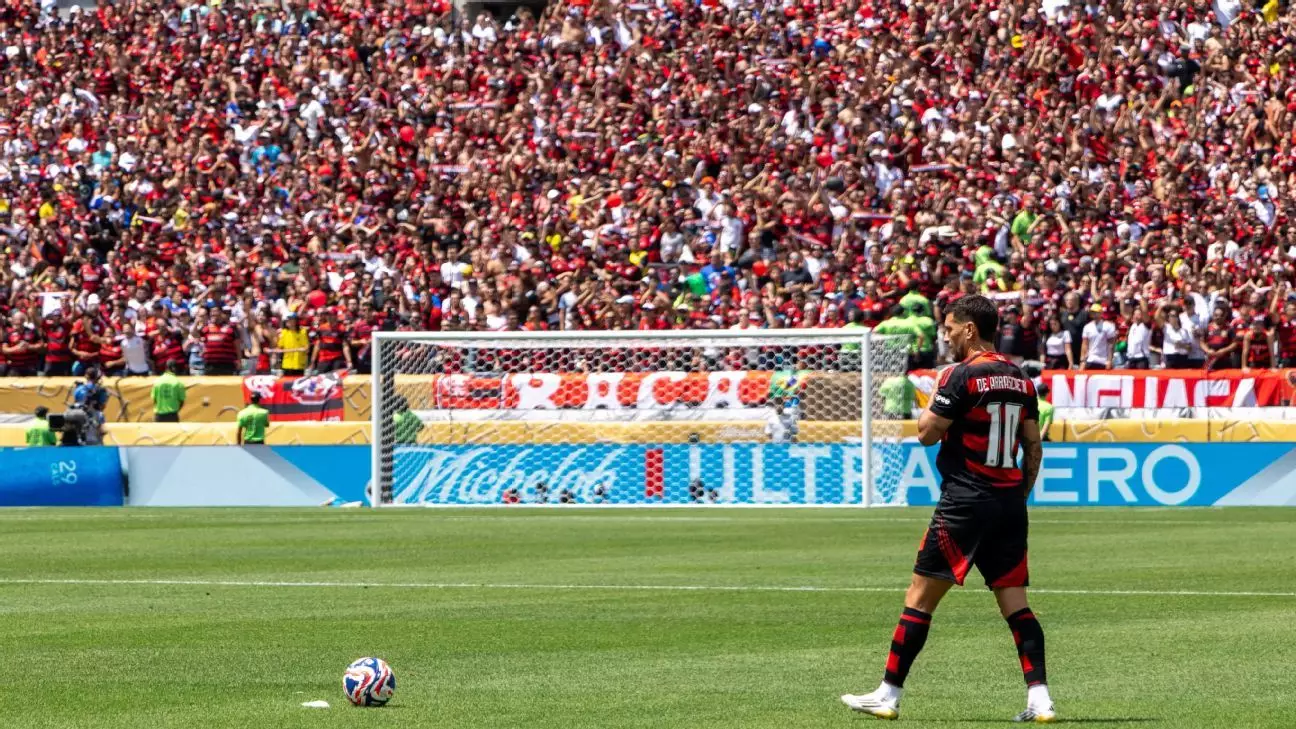The excitement surrounding Brazil’s potential to host the upcoming FIFA Club World Cup in 2029 highlights the nation’s historical and passionate relationship with football. Midway through the inaugural 32-team tournament, Brazil has emerged as a fitting venue, showcasing not only its capacity to host such grand events but also the fervor of its football culture. Despite the challenges faced—such as lackluster attendance and unpredictable weather—the tournament’s atmosphere has been revitalized by the overwhelming enthusiasm of the South American contingent, a key demographic that underscores the essence of the competition.
Passion that Resounds
The tangible spirit brought by fans from Brazil and Argentina has injected life into the tournament, pushing back against criticisms about its viability. Attendance troubles signify a broader concern about interest levels, yet supporters from these countries have come armed with fervor and pride, transforming matches into electric experiences, making the event feel almost like a home game. Each cheer, chant, and display of loyalty showcases the significance of the event, reminding the world that football in South America is not simply a sport; it is woven into the cultural fabric of the region.
As the group stages reach their conclusion, the South American teams—particularly the Brazilian squads—find themselves leading their respective groups, with five out of six teams performing admirably. The solitary exception, Boca Juniors, has surprised critics despite not topping their group, offering hope that competitiveness remains alive and well among them. These performances shed light on a broader narrative—the quest for recognition and respect from the global football community, particularly in direct competition with their European counterparts.
A Historical Context
To understand the gravity of Brazil’s ambition to host another Club World Cup, one must delve into the rich history of South American club football. The inception of the Copa Libertadores in 1960 served as a clarion call for South America to establish its own prestigious tournament mirroring the UEFA Champions League. This endeavor was fueled by the desire not just to crown facilitators of local talent but to construct a platform where they could engage directly with European champions and assert their footballing prowess on the international stage.
The introduction of the Club World Cup represents a new chapter—a golden opportunity long yearned for by South American teams to not only participate but excel against their European rivals. Unlike previous international competitions, where they were often left at a disadvantage due to schedule mismatches and player fatigue, this iteration allows teams to compete at peak performance levels, invigorated and unencumbered by the rigors that typically accompany late-season play.
Strategic Brilliance in Action
The significance of this tournament extends beyond mere participation; it reflects a strategic renaissance. Notably, Flamengo’s tactical juggling during the group phase, while narrowly avoiding failure, showcases a calculated approach to squad management. The thinning of their resources in the Copa Libertadores illustrates a broader gamble that many South American clubs are willing to take—a balancing act of performance and preservation.
Similarly, Palmeiras and Botafogo are shining examples of how cerebral management can yield success. Palmeiras has invested significantly in their squad, with the addition of high-profile talents such as Vitor Roque—a move that solidifies their commitment to contend for glory. Botafogo, proving its mettle with stunning victories against formidable opponents like Paris Saint-Germain, emphasizes the impressive defensive organization that has long been an underappreciated quality in Brazilian football. This fundamental shift in perception, away from the carefree, expressive style often caricatured as “Carnaval in boots,” is now reshaping how the world views South American footballers: as disciplined, determined athletes fiercely channeling their grit.
Favorable Conditions and High Stakes
As temperatures rise in Pasadena, the heat is both a literal and metaphorical factor favoring South American teams. With their season in full swing, Brazilian players are equipped with both stamina and tenacity, offering a marked contrast to European teams that have just completed their grueling campaigns. The psychology of competition in such searing climates cannot be understated; it affects not just physical performance but also shapes the mental outlook of players.
The stakes are higher than ever: the potential elimination for teams, combined with the presence of their loyal fanbases, creates an electric atmosphere that will only serve to elevate the quality of play. Emerging stories of resilience and tenacity serve as an ongoing narrative thread, echoing the indomitable spirit of South America’s football culture.
In the face of these challenges and prospects, one can’t help but feel that this edition of the FIFA Club World Cup may serve not just as a glorious sporting event, but also as a defining moment for South American football; a showcase of heart, unity, and a demonstration that football dreams can achieve reality, against all odds.

